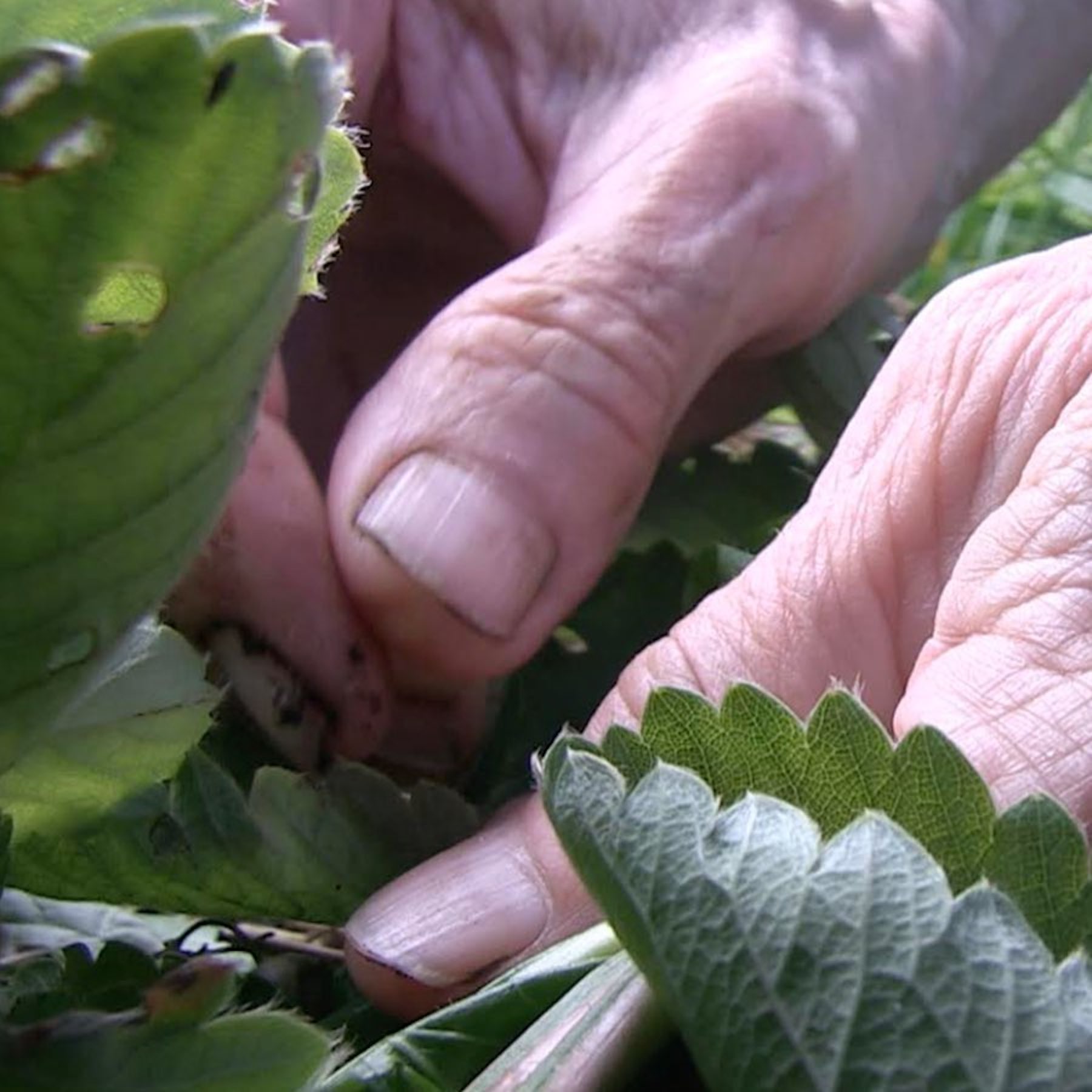simone forti: an other pretty autumn @ box gallery la.

Like an ensemble of ten dancers, Simone Forti’s fingers were moving against the wall. Actually, a large video projection of her hands in a garden in Vermont was moving on the wall. She was weeding. Talking and weeding.
She was doing so in her own garden and in fellow dancer and choreographer Steve Paxton’s garden on the semi-famous Mad Brook Farm, a commune where Forti herself used to live. Yet as the camera zoomed in close, so that all we saw was leaves, dirt, nails, knuckles, fingertips, white and pink and specked with soil against the green and peat, the scale of the dance shifted from the human to the prehensile.
The video would pan out or cut to Forti walking around the garden at times, but it was the hands that really mattered, that got your attention. Even the various objects from across Forti’s long career in contemporary dance and art that punctuated the gallery rooms themselves, either hanging from the ceiling or leaning against the walls, seemed less crucial than the video images: a piece of tall rectangular plywood, a kind of unfinished beam titled Plank (1961/2022); Saw Horse (1961/2022), which is just what it sounds like it is; That Block (2016), a simple piece of weathered wood; and The Very Big Sound (2022), a gong and mallet, silent, either just rung or waiting to be struck; an old black leather jacket was crumped in a corner; on walls around the corner in another gallery were simple painted smudges on flattened brown Trader Joe’s bags, the only canvases Forti had at her disposal during the covid-19 pandemic. They all seemed to be but dreamlike variations on the textured and almost sculptural experience of Forti’s fingers: immaterial material commentary on dematerialized video of skin and bone.
Which is to say that these were the artworks in the immediate rooms, but they came to feel rather remote and unreal, as if they were floating (which some where given that they were dangling from the ceiling). They were like mere memories in the mind as much as sculptures in the space. It was the videos that moved front and center, that seemed visceral and present, that left an imprint. What was there in the gallery seemed imaginary, disembodied, like flickering Jungian symbols in a dream, while what was on projected on the screen by flickering light felt most real, embodied, and immediate.
The air was sunny and cool. Mountain air. It was either early morning or late afternoon in the Northeast Kingdom of Vermont. As one watched, there was no revelation, no waving of a magic wand, and certainly no legerdemain. We were not really meant to grasp something profound here, it would seem, in the grandiose sense—save for the importance, permeating the gallery with its glow, of the small acts of a pair of skilled hands, slightly shaky from Forti’s Parkinson’s but all the more skilled for their casual determination to pursue the task at hand. She thumbed at roots, pinched vines, perhaps sometimes grasped at straws, but just as often meditatively navigated the bramble.
The video grabbed you, pulled you in, sorted you out. Forti’s fingers started to seem like members of the Merce Cunningham Dance Company, or an ensemble performing in Yoko Ono’s loft, or a group gathered to experiment with movement on a program at Judson Church. Yet these impressions too passed into memory, mere shadows to the immediate activity cast upon the walls.
The quotidian practice of gardening began to loom large. It refused to knuckle under. It was organic yet also assertive. It was slow and graceful, but one also noticed over time how muscular, sinewy, and full of tensed energy Forti’s fingers became. They almost seemed to vibrate with potential movement, possible ideas, a thousand memories of what might come next. Something was clutched in the moment before slipping out of grasp. Below the stem, at ground level, the hands dug in, and lifted away, with digital clarity.